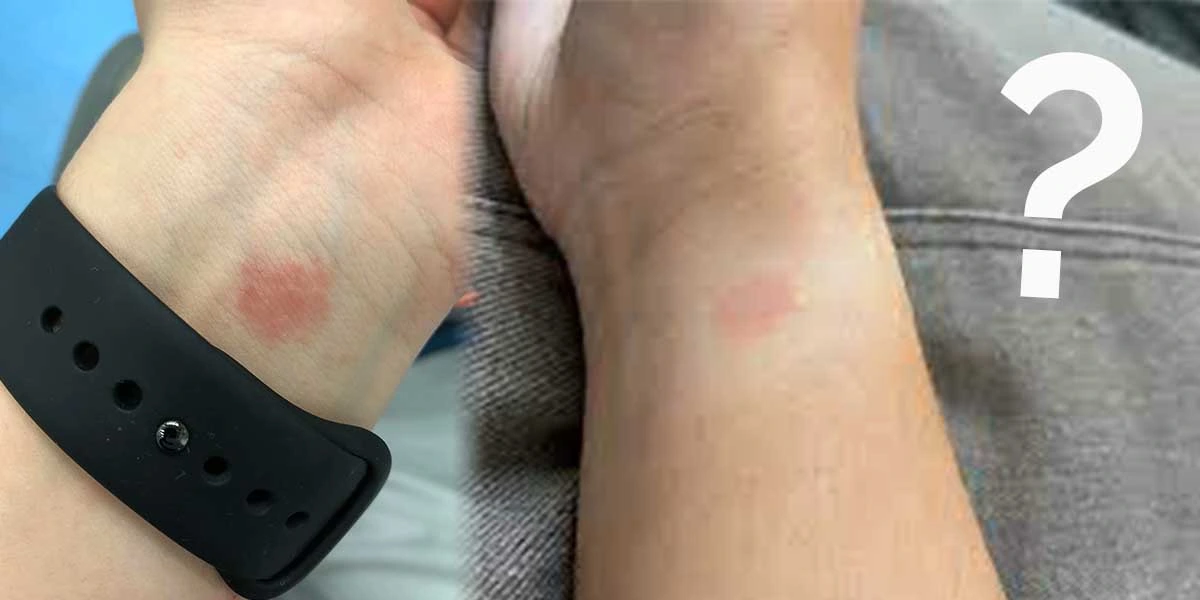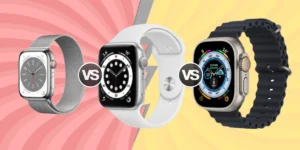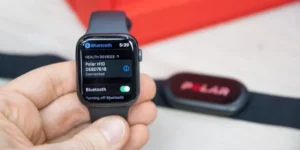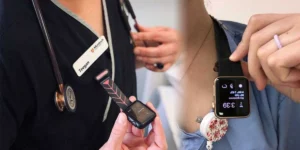Last year a small number of Apple Watch users from Reddit and Twitter reported experiencing rashes, skin irritation, and allergic reaction from wearing it.
Can Apple Watch cause rash? Or, are they trying to tarnish the brands’ reputation? The report from users is not a hoax and Apple is aware of that issue.
Thus, they posted a support page to address and explain in detail concerning the issue and warned that; “When you wear your Apple Watch be aware of potential skin sensitivities.”
The Apple Website further explained the causes of rash, skin irritation, and allergic reaction with tips to help you get rid of it. They include;
1. Sensitivity to Certain Materials (Acrylate, Nickel, and Methacrylates)
If you have skin sensitivity issues to certain material, you may experience allergic reactions which result in skin irritation and rashes on your wrist.
Apple Watch is manufactured from thousands of materials compositions, but not all of them are skin-friendly. For instance, Some Apple Watch models with stainless steel or aluminum case, stainless steel band release button and magnet in the bands and watch contain some nickel.
Despite Apple following strict nickel restrictions set by European regulation, the possibility of nickel-allergic reaction may occur under nickel exposure.
Secondly, certain Apple Watch case including the Milanese Loop, the Leather Loop, and the Modern Buckle contains traces of methacrylates and acrylates.
Both methacrylate and acrylate are synthetic polymers that are used in manufacturing cosmetic products, plasters, and adhesive bandages. However, when they come in with the skin of an individual with skin sensitivity issues they may develop sensitivities over time.
Tips to Lessen Both Nickel and Methacrylate Related Reactions
Get Skin-Friendly Bands
If you suspect the rashes are caused by either nickel or methacrylate-related reactions, we recommend you substitute the band with a skin-friendly band.
Replacing your band with a skin-friendly band can effectively lessen nickel or methacrylate-related reactions by a greater percentage and may work permanently.
Bands made from nylon, leather, and silicone are less likely to cause rashes, irritation, and skin allergies unless you have far less common skin sensitivity.
Even after replacing the band, you should allow the rash to completely heal before you start wearing it back to avoid further skin breakage. You can apply some lotion with aloe vera when you spot the first sign of rashes to help you alleviate the pain and discomfort.
Or, you can treat the crash with over-the-counter hydrocortisone or zinc oxide. But the vital advice to consider is to stop wearing your Apple Watch and focus on treating the rash until it is completely healed.
Use A Clear Plastic Wrap
Alternatively, you can also use a clear plastic wrap that acts as a separator to break the direct contact between your band and skin. Coating or wrapping the band with a clear plastic wrap is ideal if you want to preserve your Stainless Apple Watch band for a special occasion.
However, it is worth noting that both separator and coat act as a barrier and thus they will affect the accuracy of the Apple Watch’s heart rate sensor.
2. Allergic Contact Dermatitis
Did you know that around 80% of skin rashes and irritation falls under irritant contact dermatitis? Allergic Contact dermatitis is a non-contagious skin rash caused by contact with an irritant or certain substance that causes skin reaction and environmental factors.
Symptoms of contact dermatitis include itchiness, inflammation, reddening, rare blisters, burning, cracked skin, and tenderness. Contact dermatitis is commonly triggered by irritants including; jewelry, harsh detergents, soaps, cosmetics, fragrance, sweat, moisture, hair dyes, etc.
However, rashes building up underneath your wrist band may be a result of dirt build-up, extended exposure to irritants like sweat, moisture, oil, and other causes.
Besides, the above irritant may make an impact if you wear the watch for prolonged hours without cleaning your wristband.
Sweat triggers irritation because when it dries it deposits salt on your skin and then you watch rubs against the salt resulting in skin irritation.
Tips to Help you Prevent Contact Dermatitis
Keep your Watch & Skin Clean
If you are aware of developing skin sensitivities when you come directly in contact with external factors, moisture, and body fluid like sweat, you are at risk for an allergic reaction.
External factors include; metals, plastics, adhesives, dyes used in textiles or leather, cosmetic products, harsh soap and detergents, and dirt. To lessen or prevent these irritants from taking impact on your skin, we strongly advise you to keep the watch and your skin clean.
This helps to get rid of dirt build-up, salt deposit, adhesive, dye, oil, and metal particle on your skin and the band.
After washing your skin and watch, make sure you dry your skin and wrist band to avoid putting it back while still wet. That’s because moisture can trigger irritation.
However, it would be wise to have two wrist bands for your Apple Watch, instead of one. This is significant to let you use one when you have washed the other and to allow it to dry.
3. Apple Watch Fitting
The fitting or tightness of your Apple Watch wristband may also be the cause of developing the rashes. If you wear your Apple Watch too tight or too loose can result in skin irritation. Too tight causes deprive the skin under the wrist band from breathing thereby causing your skin to sweat.
Despite tight-fitting, potential rash or irritant triggers may push through the barrier and disrupt the skin cells thereby causing rash or skin irritation. If your Apple Watch is too loose, it will not stay in place and rub against your skin, which leads to skin discomfort and irritation over time.
Tips on How to Fit Apple Watch on your Wrist
Because Apple Watch is designed to be in contact with your skin so that the heart sensor works effectively and accurately, many users fit them wrongly.
Well, a better fit means comfort and better reading. When wearing your Apple Watch make sure it doesn’t fit either too loose or tight on your wrist.
Always make sure your Apple Watch fits snugly but is comfortable against your skin to allow your skin to breathe to eliminate sweat and provide a better reading.
Lastly, don’t wear your watch for prolonged hours to allow your wrist to breathe and feel free. And while working out you can tighten the band if you want, but immediately you are done with the workout remove it, wash your skin and the band, and dry.
More On Apple Watch




